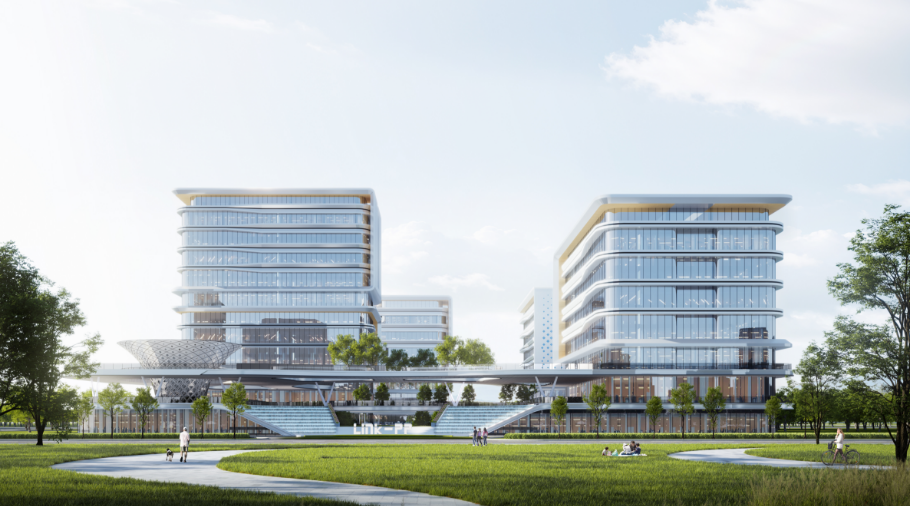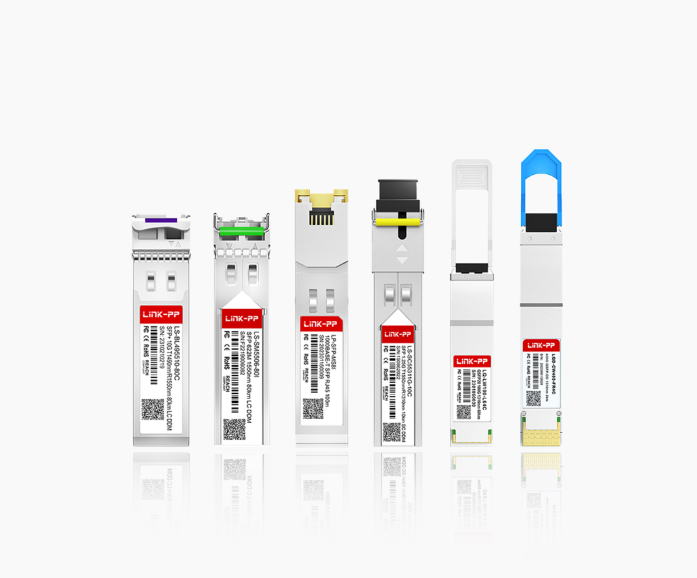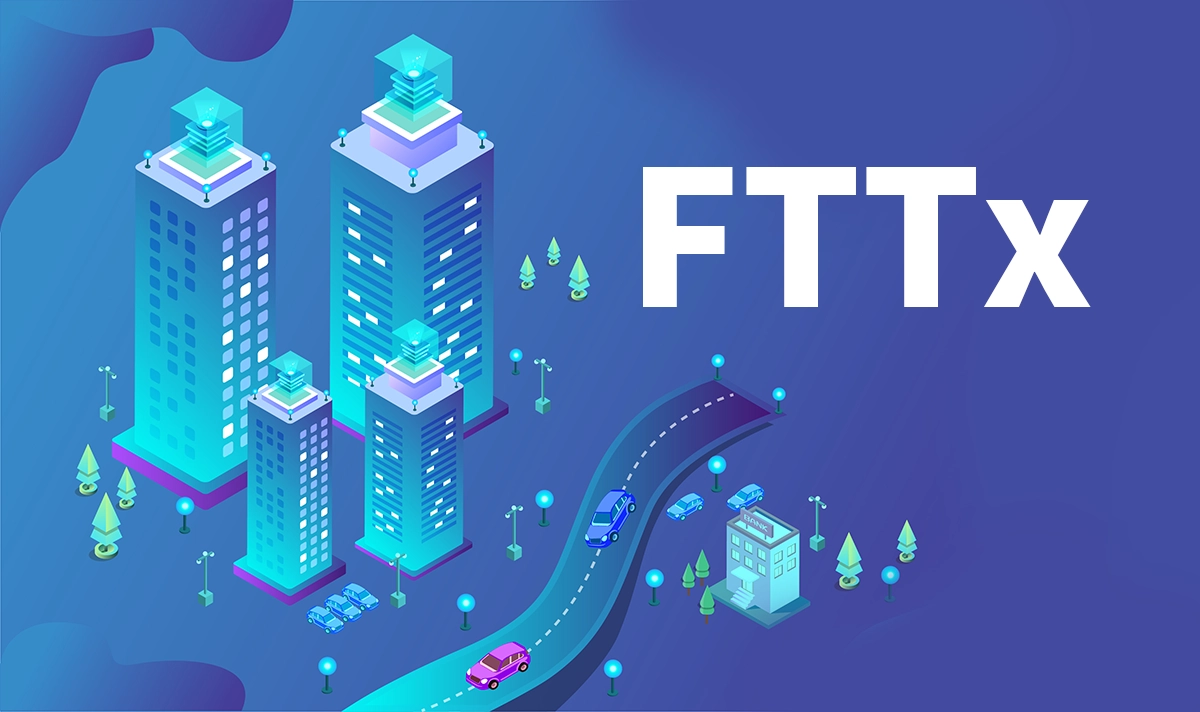
Introduction: Why FTTx Matters Today
As global internet demand surges due to 4K/8K streaming, IoT, and cloud-based applications, fiber access networks have become indispensable. At the core of this evolution lies FTTx—an umbrella term for network architectures that describe how close fiber gets to the end-user.
In this article, we break down the major FTTx models, compare their performance and implementation contexts, and showcase how LINK-PP’s high-performance optical modules support each deployment type.
✅ Author Note: This article is co-authored by LINK-PP’s network engineering team and reviewed by fiber optics consultant Dr. Edward Chang, IEEE Senior Member.
Key Takeaways
FTTx means using fiber optic cables to deliver faster, more reliable internet by bringing fiber closer to homes or buildings.
Different FTTx types like FTTH, FTTP, and FTTC vary in how far fiber reaches, affecting speed and connection quality.
Fiber networks offer big benefits over copper, including higher speeds, better reliability, lower maintenance, and future-proofing for smart homes and new technologies.
What Is FTTx?
FTTx ("Fiber to the x") includes several architectures where fiber replaces or supplements legacy copper infrastructure. It’s a modular framework to optimize speed, reliability, and cost depending on the termination point of the fiber.
Architecture | Fiber Terminates At | Last Mile Medium | Typical Use |
|---|---|---|---|
FTTH | Individual home | None | Residential |
FTTB | Building comm. room | Ethernet/Coax | MDUs/SMEs |
FTTC | Near the premises curb | Copper/VDSL | Urban areas |
Understanding Different FTTx Architectures
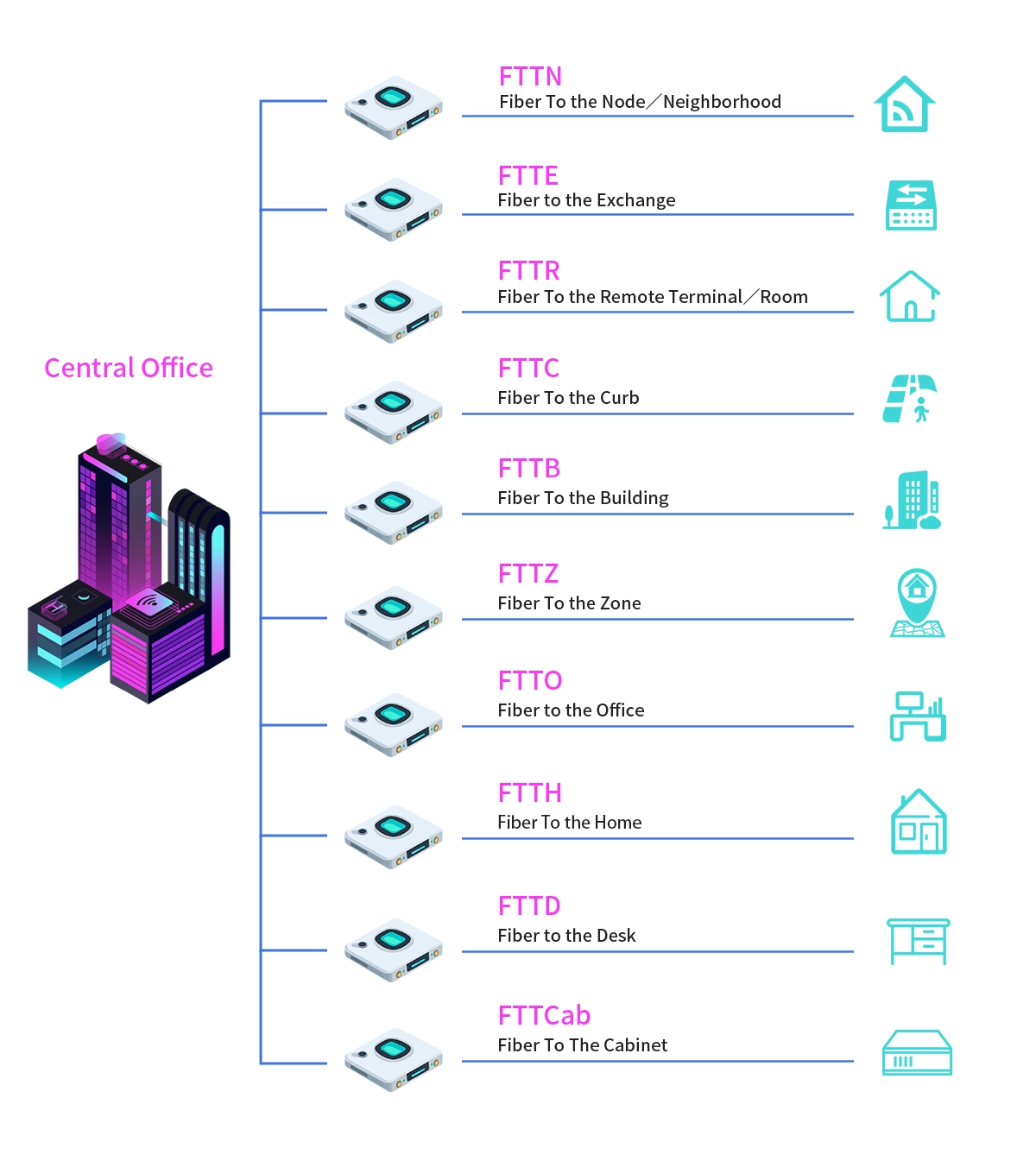
FTTx refers to a group of ways to bring fiber closer to you, making your internet better. The 'X' in FTTx stands for where the fiber optic cable ends.
Common FTTx Architectures:
▲ FTTN (Fiber To The Node/Neighborhood)
FTTN means the fiber optic cable goes from the main office to a neighborhood box or cabinet.From there, regular copper cables (like those for DSL or cable TV) connect to individual homes or businesses.
Benefit: Faster/more reliable than old copper networks.
Limitation: FTTN can't reach the super-high speeds of full-fiber solutions.
Optical transceivers in FTTN are vital at the neighborhood box. They change light signals from the fiber into electrical signals for the copper wires.
▲ FTTE (Fiber To The Exchange/Edge)
Two common meanings:
Exchange: refers to fiber going to a local exchange or central office, with other technologies finishing the connection.
Edge (Common): Fibe
r deep within a building/campus to telecom enclosures or network edge devices.
Benefit: Delivers fiber's capacity/immunity deep into enterprise networks. It helps handle lots of data and advanced applications.
▲ FTTR (Fiber To The Remote Terminal/Room)
Fiber extended within a home/SMB to individual rooms or dedicated terminals.
Benefit: Eliminates Wi-Fi dead zones, provides consistent high speed throughout. Ideal for multiple high-bandwidth devices. Uses integrated transceivers in room units.
The optical modules in FTTR solutions are often built into small, nice-looking devices that act as Wi-Fi routers.
▲ FTTC (Fiber To The Curb)
Fiber stops at a cabinet within about 300 meters of the user. This shorter copper part in FTTC means faster speeds and more reliable connections than FTTN, as less signal is lost over the copper. The final connection uses copper or coaxial cables. FTTC is cost-effective and supports high-speed internet, VoIP, and IPTV, but performance depends on the quality and length of the copper segment.
▲ FTTB (Fiber To The Building)
Fiber terminates to the basement or a special communication room inside the building. Internal copper or coaxial wiring connects individual units. Internal wiring quality affects performance. Needs fiber-optical modules at the building entry point.
Benefit: Very short copper run = high speeds for MDUs/offices. Utilizes existing in-building wiring. FTTB gives much faster speeds and more stable connections than FTTN or FTTC because the fiber reaches deep into the building, making the copper part very short.
▲ FTTZ (Fiber To The Zone)
Fiber is deployed to a defined area (e.g., business park, housing estate). Optical transceivers are key at the entry points of these zones, managing the fast data flow from the main network into the local distribution network.
Benefit: Brings high capacity close to a user group. Enables scalable services. Connection within the zone may be fiber or copper, depending on needs (might still use a mix of fiber and copper, or it could be all fiber).
▲ FTTO (Fiber To The Office)
In an FTTO system, fFiber runs directly from a building's comms room to individual offices or work areas. Offering big advantages in speed, distance, and protection from electrical interference. FTTO is perfect for handling lots of data, sending big files, video calls, and using cloud services. It also creates a network that's ready for future growth. Optical transceivers are often built into small media converters or network cards.
▲ FTTH (Fiber To The Home)
FTTH is seen as the best FTTx option because the fiber optic cable goes directly into your home/apartment. Fiber runs directly to individual residences. This setup offers symmetrical bandwidth, low latency, and speeds up to 10 Gbps or more. FTTH supports real-time applications, smart homes, and future technologies like 5G and IoT.
Benefit: Pure fiber = fastest speeds, highest reliability, lowest latency. Future-proof. Uses an ONT/ONU at the home for conversion.
▲ FTTD (Fiber To The Desk)
Fiber extended directly to the user's workstation.
Benefit: Pure fiber to the endpoint. Maximum bandwidth, security, and immunity. For extreme performance needs (e.g., graphic design, video editing, or scientific research). FTTD often with small plug-in modules (SFP) or built into network cards.
▲ FTTP (Fiber To The Premises/Premise)
Umbrella term for fiber reaching the user's property. This term is often used interchangeably with FTTH (Fiber To The Home) and FTTB (Fiber To The Building) by some internet companies, like Verizon in the US.
Benefit: Pure fiber connection (no final copper), which guarantees the fastest speeds, most bandwidth, and best reliability.
▲ FTTCab (Fiber To The Cabinet)
FTTCab, or Fiber To The Cabinet, is mostly the same as FTTC (Fiber To The Curb) in many places. The main benefit of FTTCab is that it makes the copper part of the connection much shorter. It's a cost-effective way because it reuses the copper wiring for the last part. Optical transceivers inside these street cabinets are vital for changing the light signals from the fiber into electrical signals for the copper lines.
Optical transceivers are essential in all FTTx architectures where light signals need conversion to electrical signals (copper/Ethernet/Wi-Fi) or for connecting network equipment. They are found in cabinets, nodes, building entry points, ONTs, and room/desk units. Optical modules, such as those offered by LINK-PP, are designed to meet the diverse speed and application requirements across these various scenarios.
Note: The specific implementation and terminology of FTTx architectures may vary depending on regional infrastructure, service provider practices, or international standards. Always refer to local technical guidelines or provider documentation for precise definitions.
Benefits of FTTx for Users and Businesses
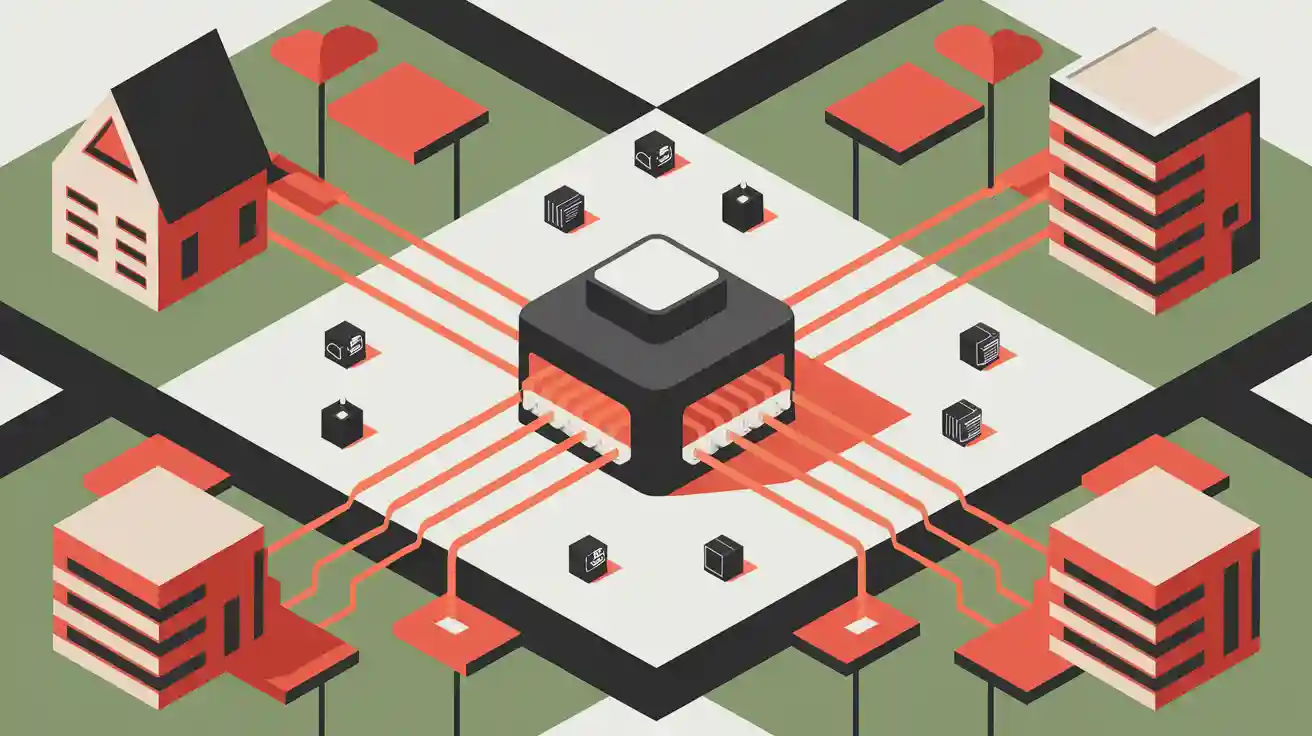
FTTx offers more than just faster internet—it builds a reliable, scalable, and future-ready digital foundation for homes and businesses.
Ultra-Fast Speeds and High Bandwidth: Fiber delivers gigabit-level speeds, ideal for 4K/8K streaming, large file transfers, cloud apps, and real-time collaboration in business environments.
High Reliability and Low Latency: Immune to electrical interference, fiber ensures stable connections and minimal delay—crucial for video calls, online gaming, and remote work.
Future-Proof Infrastructure: Upgrades usually require only endpoint equipment changes, making FTTx cost-effective and ready for evolving tech demands.
Enabler of Emerging Technologies:
IoT and Smart Cities: Supports massive device connectivity with consistent speed.
5G Backhaul: Delivers the capacity needed for next-gen mobile networks.
Cloud & Remote Work: Ensures seamless access to cloud tools and virtual teams.
Healthcare & Education: Powers telehealth, e-learning, and data-driven research.
In short, FTTx is key to building a high-performance network that empowers digital progress across all sectors.
Conclusion
FTTx technologies mark a major leap in internet infrastructure, replacing outdated copper with the speed and reliability of fiber optics. From FTTN to FTTH and FTTD, each model plays a key role in delivering faster, more future-ready networks for our digital lives.
At the heart of every FTTx deployment are optical modules—critical components that keep data flowing smoothly. LINK-PP provides high-quality, dependable modules tailored to meet diverse FTTx needs. With a strong focus on innovation and reliability, we help build networks that power everything from smart cities to remote work.
As demand for connectivity grows, investing in fiber and trusted components like those from LINK-PP is a step toward a smarter, faster future.
👉 Explore our full product range at l-p.com.
FAQ
What does FTTx stand for?
FTTx stands for "Fiber to the x." The "x" shows how close fiber optic cables reach to the end user.
Why do people prefer fiber over copper cables?
Fiber offers faster speeds, lower latency, and better reliability. It also resists interference and supports more devices at once.
Can FTTx support smart home devices?
Yes. FTTx provides high-speed, stable connections. Smart home devices work better with fiber because it handles large amounts of data quickly.



